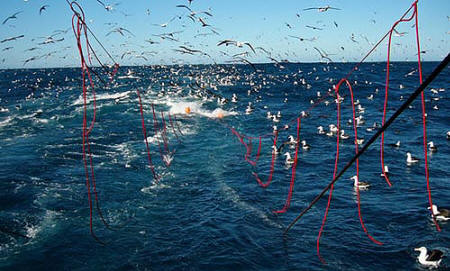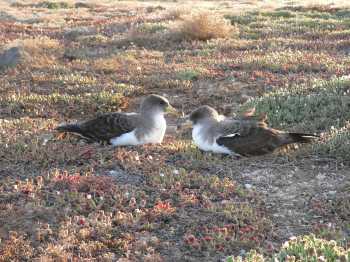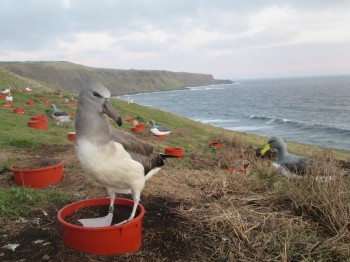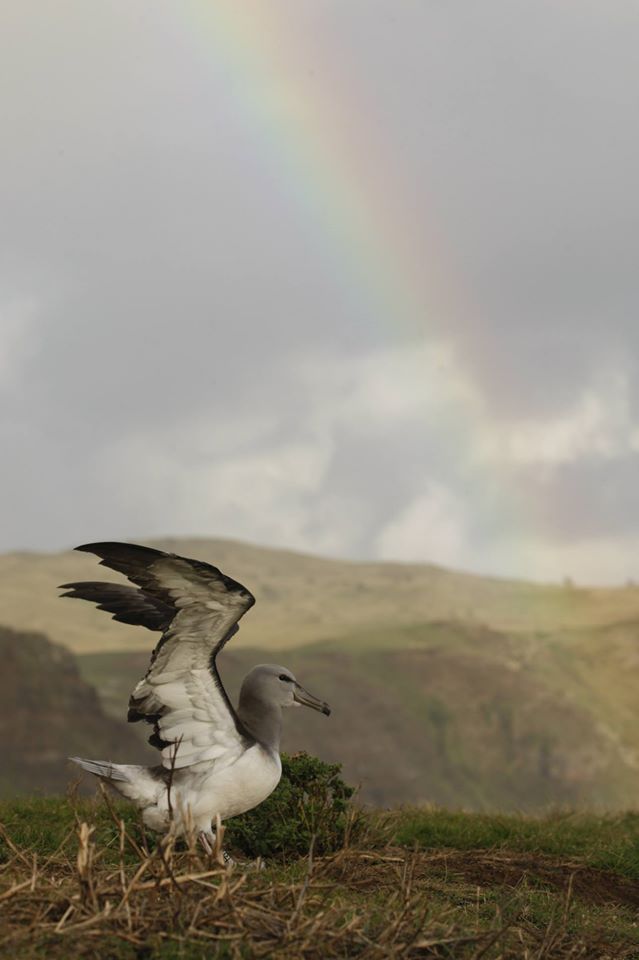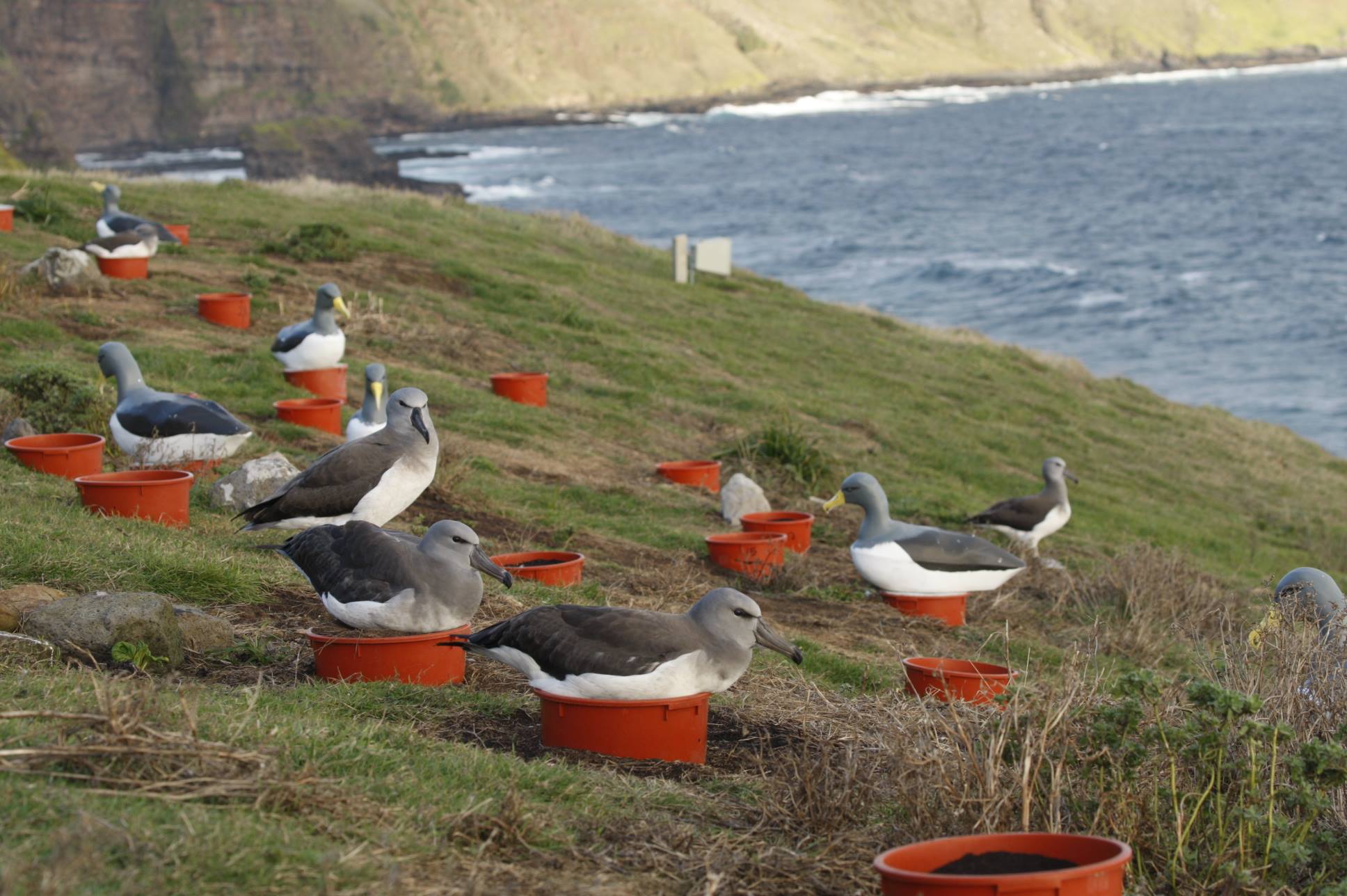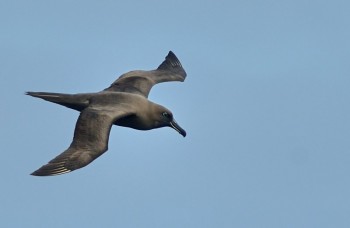“Seabird Bycatch Solutions for Fisheries Sustainability” is a free, downloadable guide produced by the American Bird Conservancy that addresses how seabirds interact with fisheries and how to reduce bycatch. The following information is taken from the ABC press release.
“Seabird bycatch is an enormous problem for sustainability of fisheries and conservation of seabirds, with at least 720 000 seabirds killed annually in longline and gillnet fisheries. To help fisheries managers avoid seabird bycatch, American Bird Conservancy has created a free, comprehensive guide that provides a wealth of information on seabird ecology, protection, and conservation. “Seabird Bycatch Solutions for Fishery Sustainability” covers how seabirds interact with fisheries, how to reduce bycatch of seabirds, and how to evaluate seabird bycatch under frameworks such as Marine Stewardship Council certification.
Twin bird-scaring lnes behind a South African demersal trawler, photograph by Barry Watkins
"The manual offers 71 pages packed with useful information on seabirds. It's designed to help those reviewing or evaluating fisheries for sustainability, or seeking practical guidance on seabird bycatch reduction in fisheries, to quickly find the help they need. Illustrated with images and animations, it presents key information concisely, and serves as a complementary resource to ABC's Seabird Maps and Information for Fisheries website.
Created for fisheries managers and evaluators, biologists, regulators, and fishers, the manual provides essential information on topics including:
- Bycatch and mortality of seabirds in marine fisheries: how do seabirds interact with different fishing gear? What are the ways they can be caught or injured?
- Risks and best practices: how can fisheries managers and others avoid seabird bycatch? For some gear types there are very effective and inexpensive solutions.
- How to evaluate seabirds within a Marine Stewardship Council certification process: how do the new Fishery Certification Requirements take into account seabirds and seabird bycatch? This section covers all of the MSC Performance Indicators related to seabirds.
- Legal status and conservation of seabirds: how do various agreements, governments, and organizations around the world protect seabirds?
Additional sections provide background on seabird diversity and ecology; best practices for managing the forage fish upon which seabirds depend; resources such as additional web tools to assist fisheries evaluators and biologists in assessing risks and reducing bycatch; and more.
The manual is available free for download in two versions. The animations in the smaller version (25 MB) require access to the Internet (YouTube). The larger version (100 MB) contains embedded animations, and once downloaded can be viewed without Internet access."
John Cooper, ACAP Information Officer, 18 April 2016
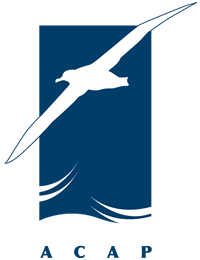
 English
English  Français
Français  Español
Español 